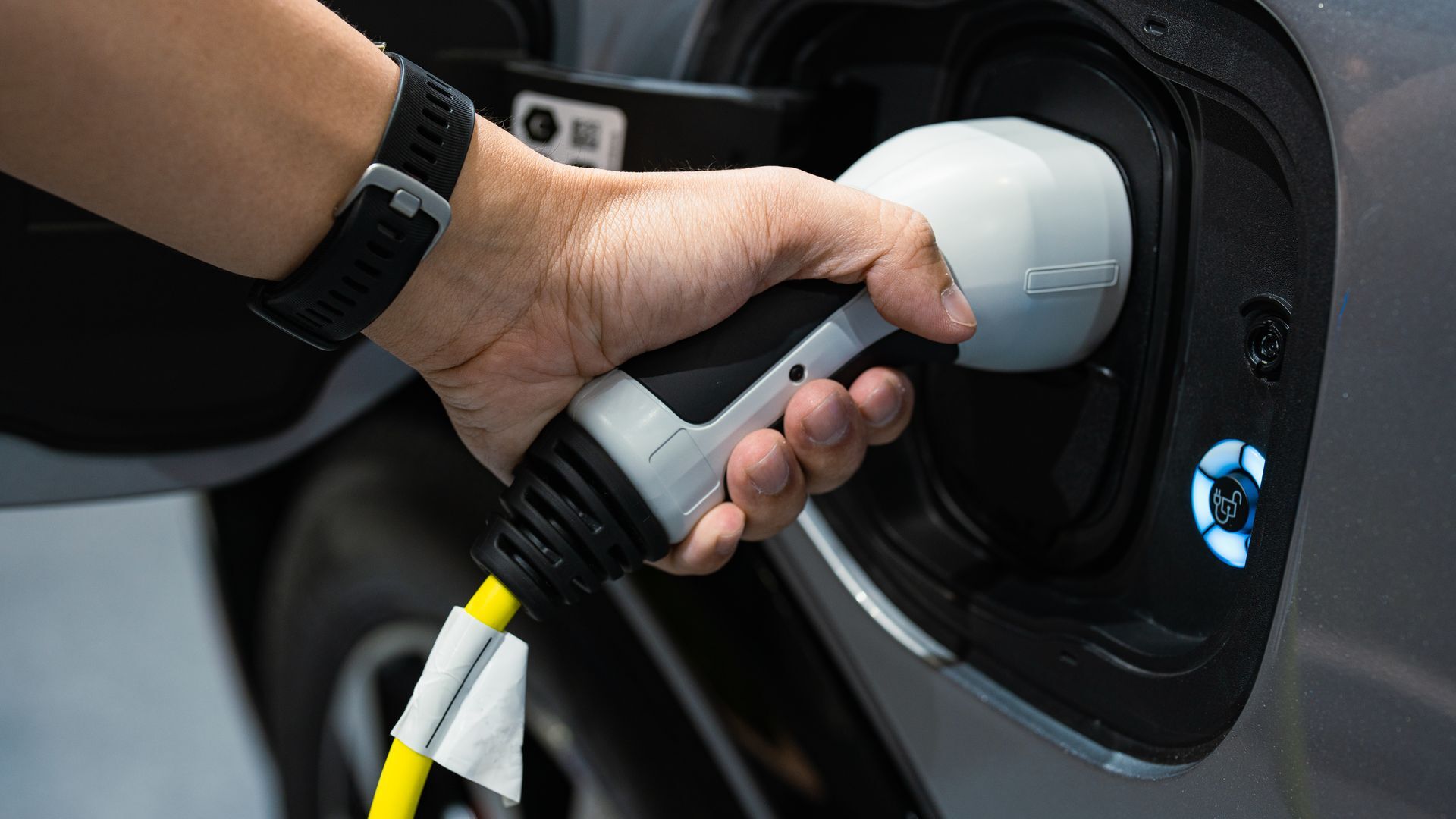
EV tax credit changes limit consumers’ options, force new industry strategies
Media Landscape
This story is a Media Miss by the right as only 9% of the coverage is from right leaning media.
Learn more about this dataLeft 46%
Center 45%
Right 9%
[Rod Roddy / The Price is Right]
COME ON DOWN – THE AMERICAN GOVERNMENT WANTS TO HELP YOU BUY A NEW CAR.
[JACK ALYMER]
BUT IF YOU WANT TO QUALIFY FOR THOSE ALL IMPORTANT 75-HUNDRED-DOLLARS IN TAX CREDITS – THE OPTIONS ARE MORE LIMITED THAN EVER.
YOU’VE GOT JUST 5 E-V MODELS AND ONE PLUG-IN HYBRID TO CHOOSE FROM!
THAT’S BECAUSE FOR A VEHICLE TO RECEIVE THE FULL EV TAX CREDIT, IT MUST COMPLY WITH THREE MAJOR MANUFACTURING REQUIREMENTS.
ONE: IT MUST BE ASSEMBLED IN NORTH AMERICA.
TWO: AT LEAST 50-PERCENT OF BATTERY COMPONENTS MUST COME FROM THE U-S OR COUNTRIES THE U-S HAS FREE TRADE AGREEMENTS.
AND THREE: THE VEHICLE MUST GET AT LEAST HALF OF WHAT POWERS THE BATTERY FROM THOSE SAME DOMESTIC AND FREE-TRADE SOURCES.
BY 20-27, THOSE BATTERY REQUIREMENTS WILL BOTH INCREASE TO EIGHTY PERCENT, WHICH MAY FURTHER LIMIT OPTIONS.
BUT MORE EVS COULD POTENTIALLY MISS TAX CREDIT QUALIFICATION AS EARLY AS NEXT YEAR.
ESSENTIALLY IF AUTOMAKERS WANT TO QUALIFY, NO MORE GETTING MATERIALS FROM CHINA, WHICH CURRENTLY, NINETY PERCENT OF THE EV SUPPLY CHAIN IS RELIANT ON.
THAT’S ACCORDING TO A MORGAN STANLEY REPORT.
AS A RESULT OF THESE NEW RULES, TWENTY FOUR EV VARIATIONS THAT QUALIFIED FOR TAX CREDITS LAST YEAR, NO LONGER DO.
THE NISSAN LEAF, CHEVY BLAZER, FORD MUSTANG MACH-E, AND EVEN SOME TESLA MODELS
IT’S A BLOW TO CONSUMERS WHO MAY HAVE BEEN WAITING TO PURCHASE AN EV IN 20-24, WHICH IS WHEN DEALERSHIPS GAINED THE ABILITY TO GIVE THEIR CUSTOMERS INSTANT ACCESS TO TAX CREDITS.
PRIOR TO THE START OF THIS YEAR, ALL EV BUYERS HAD TO WAIT UNTIL AFTER THEY FILED THEIR TAXES TO CLAIM THE CREDIT.
THIS HAS ALL LED AUTOMAKERS AND EV BATTERY MANUFACTURERS TO PIVOT TOWARD INVESTING IN MORE NORTH AMERICAN BASED INFRASTRUCTURE TO MAKE VEHICLES THAT WILL MEET THE REQUIREMENTS FOR TAX CREDITS.
TO THE TUNE OF 40-BILLION-DOLLARS SO FAR.
BUT BUILDING THOSE FACILITIES WILL TAKE YEARS.
AND AUTOMAKERS – DON’T HAVE THE LUXURY OF WAITING AROUND FOR THE U-S TO CATCH-UP.
GM, WHICH SAW A NINETY THREE PERCENT INCREASE IN THEIR EV SALES LAST YEAR, IS NOW OFFERING INCENTIVES EQUAL TO THE FULL TAX CREDIT FOR ITS EVS THAT LOST THEIR QUALIFICATION STATUS.
FORD, WHOSE F-150 EV RETAINED ITS VEHICLE CREDITS, IS HIKING THE PRICES ON SOME OF THOSE ELECTRIC TRUCKS BY TEN THOUSAND DOLLARS,AS SOME OF THEIR OTHER MODELS NOW NO LONGER QUALIFY.
THE AUTOMAKER HAS ALSO MOVED TO MAKE MAJOR PRODUCTION CUTS OF ABOUT FIFTY PERCENT ON SOME OF THEIR EVS.
TESLA, WHO LED THE WORLD IN EVS SOLD DURING 20-23, HAS ALSO INDICATED IT WILL MAKE CHANGES SO THAT MORE OF THEIR VEHICLES CAN RECEIVE THESE CREDITS.
THE COMPANY SAYS THEIR CYBERTRUCK IS LIKELY TO QUALIFY LATER THIS YEAR.





